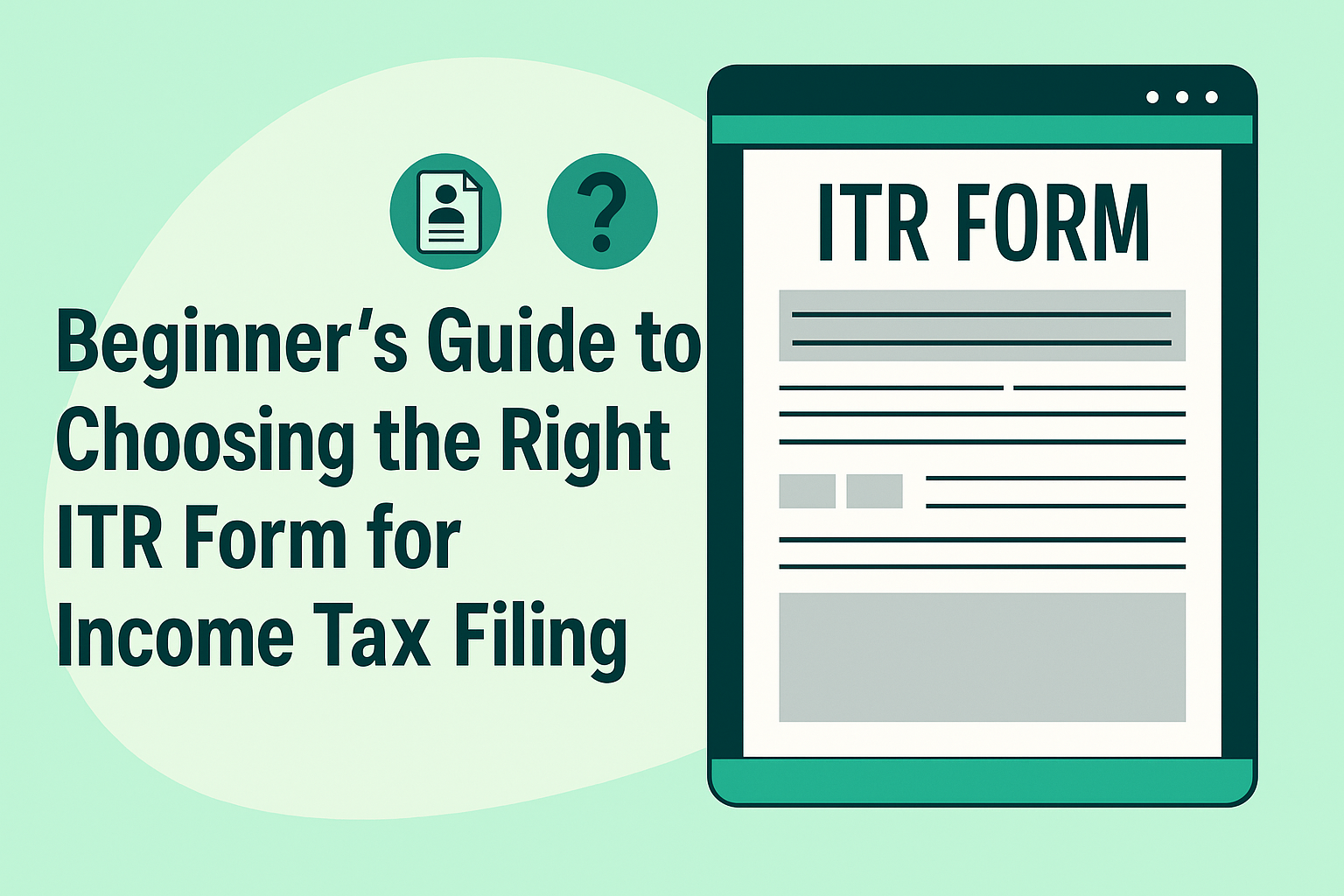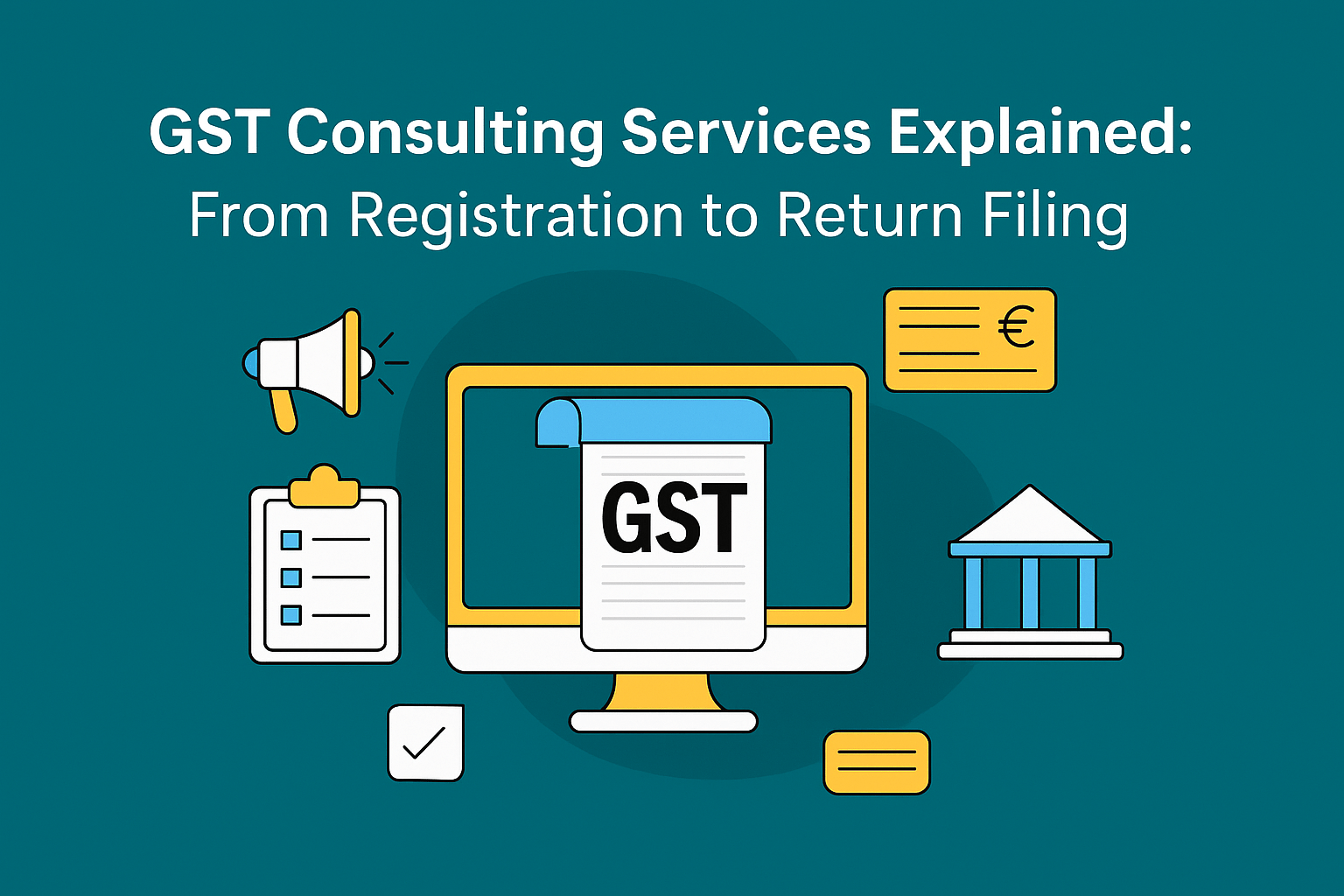Beginner’s Guide to Choosing the Right ITR Form for Income Tax Filing

Strong 8k brings an ultra-HD IPTV experience to your living room and your pocket.
Introduction
It is an important duty for each taxpayer to file an income tax return (ITR). It ensures adherence to tax requirements, assists in claiming deductions, and can even be used as a financial document for loans or visas. Yet, one of the typical issues for new taxpayers is choosing the right income tax return form. Since there are several types of ITRs, picking the wrong one may cause errors, fines, or delays. This handbook intends to make the ITR return filing process easier by demystifying which ITR to file and how to select the correct form for one's individual income tax return.
ITR Forms
ITR forms are standardized forms released by the India Income Tax Department for taxpayers to provide their income, deductions, and tax liability.ITR-1 to ITR-7 are the seven main types of income tax return forms. Each one is made for a different group of people and type of income. Choosing the correct form is crucial to file ITR online correctly and avoid problems such as rejection or scrutiny. Filing ITR with an incorrect form can make annual income tax return filing difficult and result in penalties, so it is important to know when and which different types of income tax return.
Key Considerations When Selecting an ITR Form
Consider these before deciding which ITR Types to submit, even before we go over the specifics of the
- various forms:Source of Income: Are you receiving income from salary, business, capital gains, or any other sources such as interest or rent?
- Income Level and Exemptions: Is your overall income above ₹50 lakh, or are you availing certain exemptions?
- Residential Status: Are you resident, non-resident, or resident but not ordinarily resident (RNOR)?
- Complexity of Transactions: Do you hold foreign income, assets, or complicated investments?
These features will guide your choice of form to submit for income tax ITR Filling.
Read also: Things to keep in mind before filing ITR
In-Depth Analysis of ITR Forms
ITR-1 (Sahaj)
- Who Can Use It?
- Suitable for salaried employees, pensioners, or having income from a house property, interest, or family pension (total income up to ₹50 lakh).
- Who Cannot Use It?
- Not appropriate for agricultural income of more than ₹5,000, capital gains, overseas assets, or company income.
- Example Scenario: Priya who is a salaried employee having a fixed deposit is eligible to e-file ITR with Form 16 through ITR-1.
ITR-2
- Eligibility: For individuals or Hindu Undivided Families (HUFs) with capital gains income, foreign assets, or more than one house property incomes but no business income.
- Key Features and Restrictions: Appropriate for sophisticated investments but not for professional or business income.
- Example Situation: Raj, who has sold shares and possesses foreign stocks, files his individual income tax return using ITR-2.
ITR-3
- Applicability: For individuals/HUFs with business or profession income, including partnership firms.
- ITR-3 is different from ITR-2 in that it has a part for business income, while ITR-2 does not.
- Example Scenario: Anita, a freelance graphic designer, submits ITR-3 for reporting her professional earnings.
ITR-4 (Sugam)
- Who Can Use It?: For individuals, HUFs, or firms with presumptive business or professional income (business turnover up to ₹2 crore or professionals up to ₹50 lakh).
- Restrictions: Not for those with capital gains, foreign assets, or income above the presumptive amount.
- Example Scenario: Sameer, a small shopkeeper with a turnover of ₹80 lakh, chooses ITR-4.
ITR-5, ITR-6, and ITR-7
- ITR-5 is for firms, LLPs, or companies; ITR-6 is for firms; ITR-7 is for trusts, political parties, or charitable organisations.
- When Applicable for Individuals: Individuals who are partners in a firm can indirectly need to file ITR-5.
- Note: These forms are not so frequently used for individual taxpayers but can be applicable in a few cases.
Step-by-Step Guide on Selecting the Correct ITR Form
- Estimate Your Income Sources: Enumerate all the sources of income (e.g., salary, rent, business, or investments). For example, use Form 16 to list you pay.
- Determine Your Residential Status: Residents disclose worldwide income, whereas non-residents declare India-sourced income only.
- Check for Special Conditions: Identify foreign assets, agricultural income, or capital gains, as these influence form selection.
- Match Your Profile: Match your information to the eligibility standards of income tax return type.
- Apply Online Tools or Consultants: Online tools such as ClearTax or ITR filing consultants can help make it easy. Look up the best Website for ITR filing for simple options.
Common Mistakes to Avoid
- Choosing the Wrong Form: Inaccurate information will result in filling out the wrong form, hence rejection.
- Missing Deadlines: For non-audit cases, the usual due date for income tax return filing for beginners is July 31.
- Not Reporting All Income: Leaving out interest or freelance income can invite notices.
- Failing to Verify: Unverified ITRs are not valid, so verify within 30 days of filing.
Tips for Beginners
- Organize Documents: Have Form 16, bank statements, and investment proofs ready for hassle-free income tax return file online.
- Understand Tax Slabs: Get to know tax slabs and deductions (e.g., Section 80C) to ensure maximum benefit of filing income tax return.
- Use Online Portals: Sites such as ClearTax or the Income Tax Department's e-filing portal are easy to use for income tax ITR filing.
- Seek Help: In case of complicated cases, look for income tax filing help near me or talk to a professional.
Conclusion
Selecting the appropriate ITR form is the cornerstone of precise income tax return filing for beginners. Knowing your source of income, resident status, and financial intricacy helps you choose the proper type of income tax return confidently. Prepare well in advance, refer to trustworthy sources such as the Income Tax Department's website, and utilize tools such as Online chartered for assistance. Timely filing of your annual income tax return not only keeps you compliant but also avails financial benefits. Begin today and have ITR return filing made easy!
FAQs
What happens if I file using the wrong ITR form?
Filing with the wrong form may lead to rejection or scrutiny. You can file a revised return before the deadline.
Can I switch ITR forms after filing?
Yes, you can file a revised return with the correct form before December 31 of the assessment year.
How do I know my residential status for tax purposes?
You’re a resident if you stay in India for 182 days or more in a financial year or meet other conditions outlined by the Income Tax Act.
Note: IndiBlogHub features both user-submitted and editorial content. We do not verify third-party contributions. Read our Disclaimer and Privacy Policyfor details.




